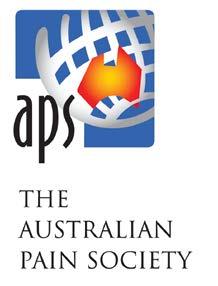Editor’s Note
Dr Lincoln Tracy
The 42nd Annual Scientific Meeting (ASM) for the Australian Pain Society has come and gone for another year. This was an event I was really looking forward to. But, like many people have experienced, COVID came roaring into my household the morning I was due to fly out. It was a shame to miss out on seeing friends and colleagues in a face-toface environment for the first time in several years.
However, I was able to follow all the wonderful tweets using (#AusPainSoc) while in isolation. I can also tell from reading the post-ASM wrap provided by Local Organising Committee Convenor Dinah Spratt that a great time was had by all. We are already counting down the days until the 43rd ASM in Canberra, our nation’s capital.
In addition to the post-ASM wrap, this edition of the eNewsletter features interviews with Rising Star Award winner Adrian Traeger and ASM international keynote speakers Andrew Rice and Beverly Thorn. While all three were wonderful to speak with, I strongly recommend reading through the interview with Andrew Rice. Professor Rice has had an incredible career, and it was fascinating to hear how he has incorporated his love of military history into his research and clinical work.
This month the Member Spotlight shines on new WA Director Jacintha Bell. If you haven’t had the chance to meet Jacintha, the spotlight provides the perfect opportunity to learn more about one of the Society’s newest Board members.
As always, there are several great publications from APS members featured in the eNewsletter. I’d particularly like to thank Dr Stephanie Mathieson and her colleagues for sharing their recent publication “Continued opioid use following emergency department (ED) presentation for low back pain”. The authors report approximately one in three patients who present to the ED with low back pain receive a prescription for opioids on discharge and are still taking opioids four weeks later. Although this study was limited to EDs in New South Wales, it is concerning to consider similar patters are likely to occur in other jurisdictions across Australia.
Finally, I hope you enjoy the new angular newsletter design proposed by Jacquie Larcombe, our graphic designer.
Until next time, Lincoln
Post Conference Review of the Australian Pain Society’s Annual Scientific Meeting


 By Dinah Spratt Local Organising Committee Convenor, SPC member and APS Secretary
By Dinah Spratt Local Organising Committee Convenor, SPC member and APS Secretary
Excitement was in the air at the Australian Pain Society’s 42nd Annual Scientific Meeting in Hobart, with the refreshing buzz of the 500 plus delegates catching up over a glass of fizz in the Exhibition Hall, following the highly successful pre-conference workshops. It was wonderful to be face-toface again (albeit behind face masks), and Hobart offered the perfect setting. The presentation of a massive cheque (literally) from the Australian Pain Relief Association to the APS of over half a million dollars certainly put a smile on the faces of the Executive Board!
Who better to welcome the APS to Tasmania’s shores than its new State Premier, the Hon Jeremy Rockliff MP, who gave the Official Opening, and made reference to his plans of addressing the recommendations made in the National Strategic Action Plan for Pain Management (NSAPPM) to provide optimal pain management to all Australians living with pain.
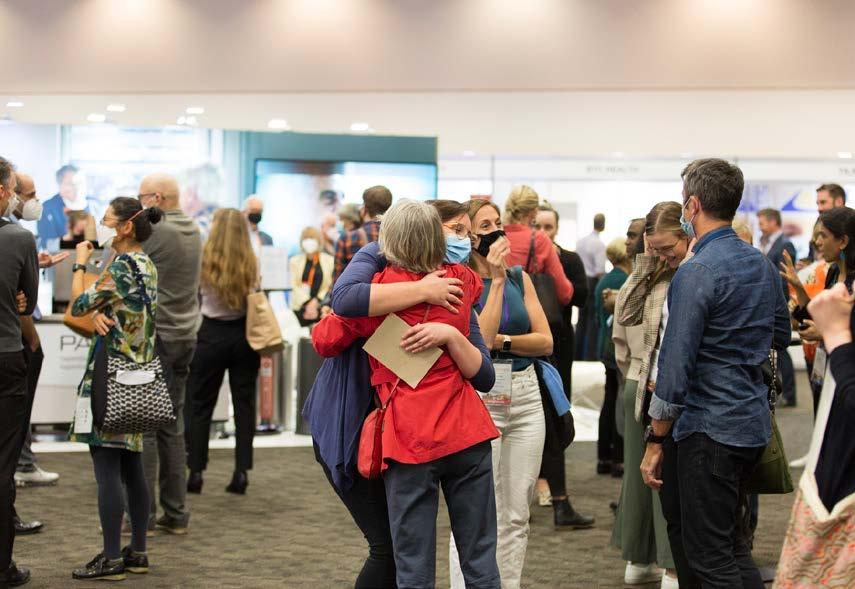
The IASP’s Global Year for Translating Pain Knowledge to Practice was certainly the theme of the meeting, with international speakers
Professor Andrew Rice and Professor Beverly Thorn generously sharing their knowledge by covering diverse topics, from the clinical efficacy of medicinal cannabinoid analgesia to the most effective cognitive behavioural approaches for the ‘hard to reach’ patient in pain.

Our national speakers covered a myriad of topics on IASP’s theme, and Professor Mark Hutchinson kicked off the first plenary session with the IASP Global Year Lecture, taking us on a neuroimmunopharmacology journey, looking into the extraordinary and complex changes that occur at a cellular level in the spinal cord which causes allodynia.
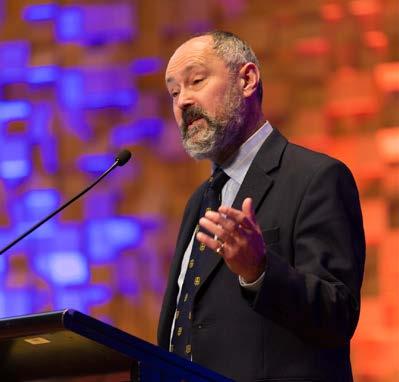
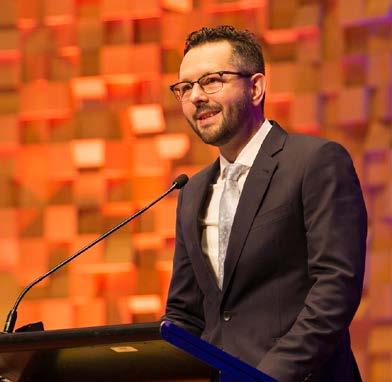
Professor Hutchinson also highlighted the role of the Pain Solutions Alliance, a steering committee which has evolved out of the NSAPPM, looking into how research and ideas can be translated into practice. “After all,’ he exclaimed, “There’s no point publishing a book just for the book-shelf”.
Professor Steve Kamper delivered the Bonica Lecture on “Pain, Health, and Lifestyle” and drew our attention to how pain is more than just an injury. Though pain is often linked to chronic diseases it can also cause chronic disease,
through lifestyle changes such as smoking, alcohol, and reduced exercise. His research is looking into better clinical care and support by targeting the unique health risk factors that relate to individual’s pain behaviour.
This year’s Tess Cramond Lecture was delivered by Dr Christine Barry, on “Translating pain science to practice in women’s health”, focusing on current methods for treating neuroproliferative vestibulodynia and the barriers faced in developing better treatment.
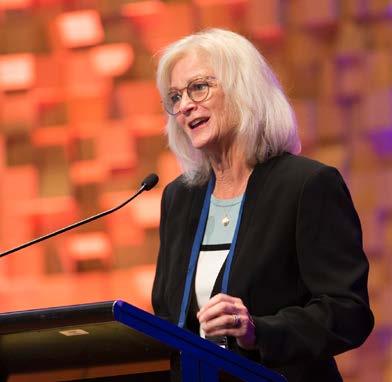
Associate Professor Suzanne Nielson kept us up to date on opioids, with her plenary lecture discussing trends in opioid prescribing and the continued mortality rates from overdose, despite opioid dose reduction and tapering. A/ Prof Nielson emphasized the need for more resources to assist the clinician and consumer better in utilizing other options to provide better tolerance of pain and the distress that accompanies it.
The panel debate on the controversial topic of medicinal cannabis and its perspective on pain, people and policy, was an excellent complement to Professor Rice’s lecture on “Cannabinoid Analgesia: What is the Evidence for Benefit and Harm?”. The panel gave an insightful and respectful view of the challenges faced, both for and against the use of cannabinoids, thankfully avoiding any hand-to-hand combat!
Wednesday’s closing plenary lecture of the conference was presented by the Cops for Kids Clinical Research Grant scholar Hayley Leake, who gave an excellent summary on her research looking into chronic pain in adolescents, and her collaborative approach in designing an Instagram page where adolescents in pain can seek valuable information.
The eighteen Topical Sessions were a great success and covered broad themes of pain science and practice, from treating pain from neurobiological perspectives, to exploring innovative technology in assessment and treatment, and from brain biomarkers in headache, to goal setting and cognitive flexibility in adjusting to chronic pain. The conference hosted its first Clinical Stream topical session, presented by the Royal Hobart Hospital’s Persistent Pain Service’s multidisciplinary health care team. The session explored the role of each health care professional team member in the assessment and management process of the service’s complex chronic pain patients. The session had a good attendance, and we look forward to this stream being repeated in future ASMs.
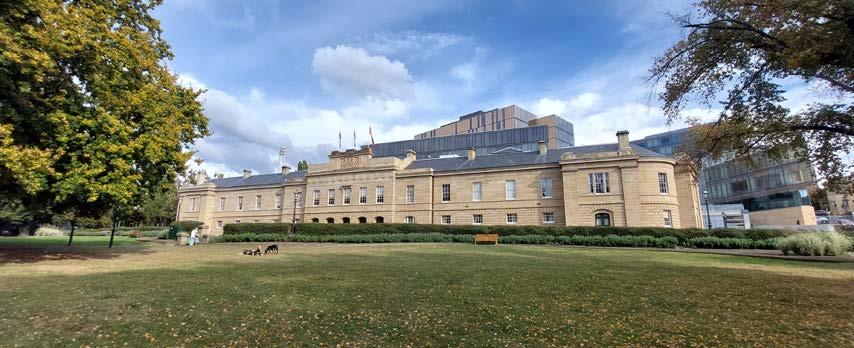
The APS was delighted to invite our three Distinguished Member awardees to the stage: A/Prof David Champion (2020), Dr Will Howard (2021), and Dr Michael Farrell (2022). It was a delight to be able to recognise these worthy recipients in person!
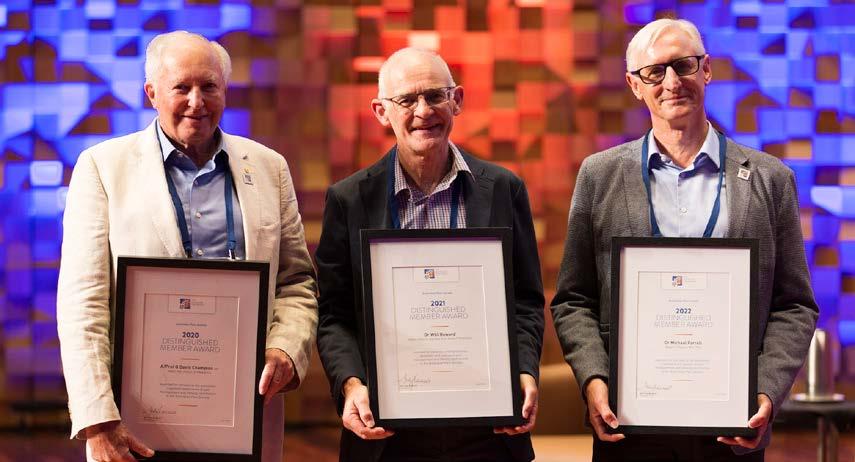
Our 2022’s Rising Star winner, Dr Adrian Traeger, gave us an interesting talk on the trends of “Overdiagnosis of low back pain” and how clinicians can inform patients better, in the
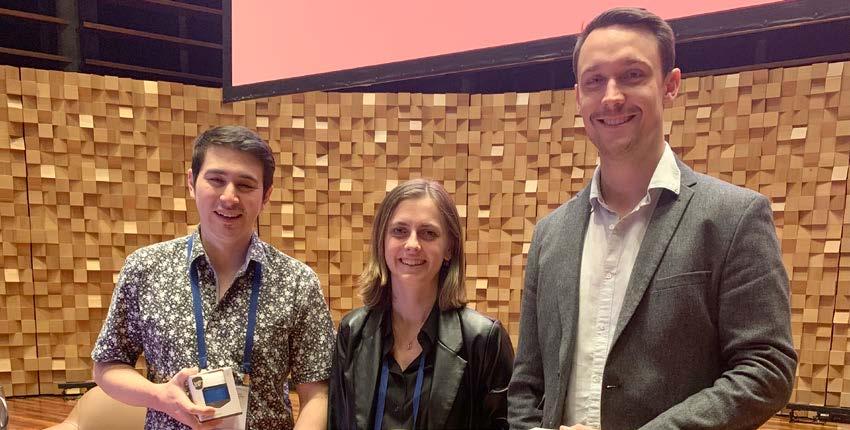
hope of lessening the urge for imaging and unnecessary (and costly) medical or surgical interventions.

On another winning note, our congratulations go to the following prize winners:
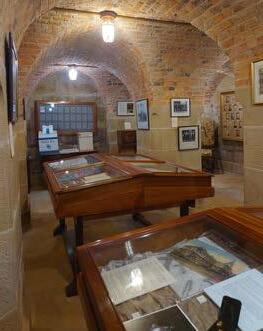
Mr Lewis Crawford for Best Free Paper
Miss Summer Page for Best Rapid Communication
Mr Damien Boorman for Best Poster
Our social program did not disappoint, and Monday evening provided an opportunity for social catch ups at the local tavern as well as a history tour of Parliament House (formerly Customs House). Members of the Legislative Council, coordinated by the Hon Mike Gaffney MLC, generously gave up their time to show delegates around, from the Upper House to the arch-ceilinged cellar (top to bottom!), and shared their knowledge of its rich history.
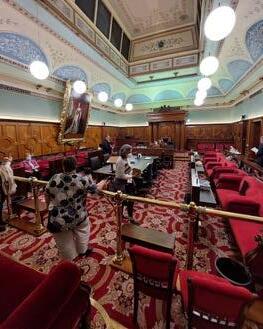
The Gala Dinner and live band was a blast, with everyone hitting the dance floor in true APS tradition!
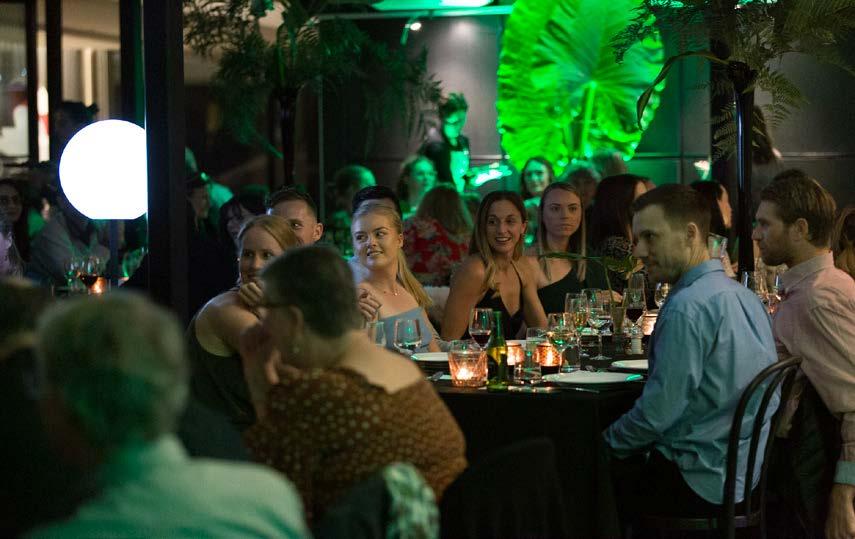
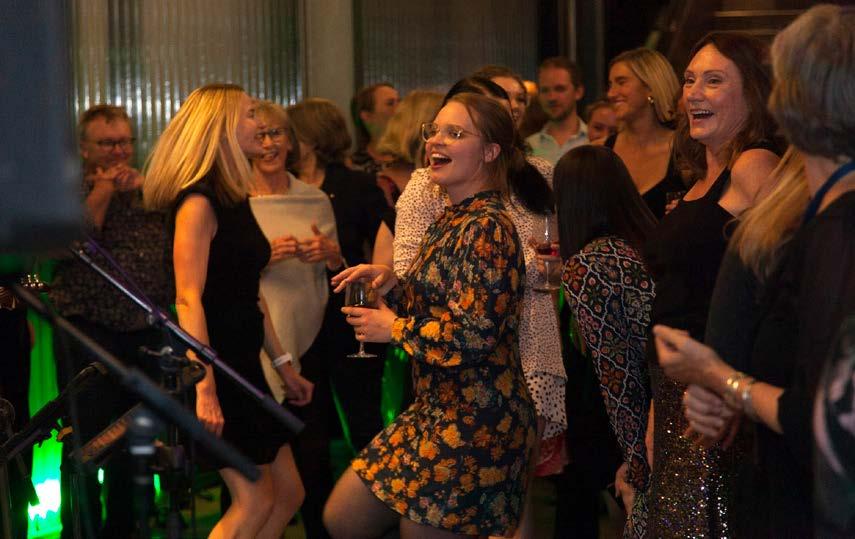
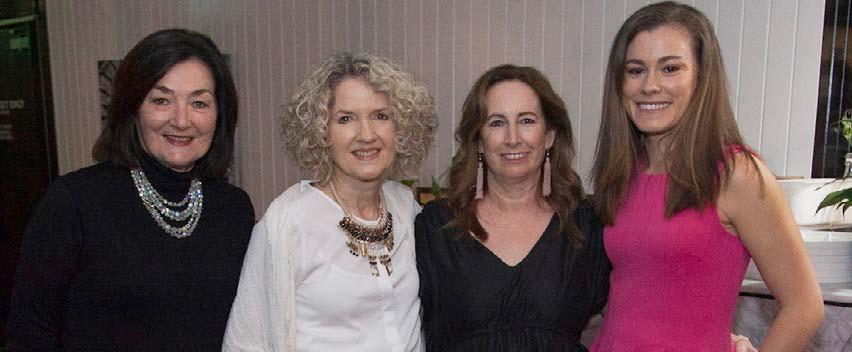

The success of Hobart’s ASM has certainly put our face-to-face conferences back on the map, and for that we graciously thank the Scientific Program Committee and its Chair Professor Kevin Keay, the Local Organising Committee, and the staff of DCC&A for their extremely hard work and dedication in making the APS conference exceed all expectations, and for providing us with a most enjoyable learning experience.
We also thank you, the delegates, for entering into the unknown of attending a face-to-face event in the post COVID world, and for making it such a fulfilling and enjoyable learning experience.
It’s time to save the date for next year’s conference in Canberra from 2-5 April 2023, which will bring another exciting and inspiring program. Looking forward to seeing you all there!

Thank you for attending APS 2022!
Thank you to those who joined us at the 2022 Australian Pain Society 42nd Annual Scientific Meeting held in Hobart just before Easter.

APS 2022 Photos
The conference photographs are now available to view and can be downloaded here.
APS Conference Recordings are Now Available

We’ve got you covered if you missed out on the conference! EverTechnology recorded 36 sessions at the APS 2022. These are now available in in MP3 Audio and MP4 Video format. Check out the various packages below.

This recording is optimised for listening on portable audio players. Whether you listen in the car or on your portable player, the voice will be clear and present.
Purchase Recordings Here
Get Ready for APS 2023!
We’ll be holding our 43rd Annual Scientific Meeting in the Australian capital, Canberra. Visit the conference website: www.dcconferences.com.au/aps2023
Further information on APS 2023 will be sent out in the coming months
Express your Interest
Features crystal clear audio with the added benefit of seeing a full-screen presentation of the speakers’ slides presentation.
Please click below to register your interest in APS 2023. You will be notified of important milestones –such as when abstract portals or registrations open.
I am interested
We look forward to seeing you in Canberra. Should you have queries, please contact the Conference Secretariat
Australian Pain Society 2022 Rising
Star Award Winner: A Chat with Adrian Traeger

Adrian Traeger, PhD, is a research fellow at the Institute for Musculoskeletal Health, a division of the School of Public Health, University of Sydney. His research centres around developing strategies to improve healthcare for low back pain and other musculoskeletal conditions. He completed his PhD at the University of New South Wales and Neuroscience Research Australia with Professor James McAuley and Professor Lorimer Moseley and has worked as a primary care physiotherapist for over a decade. You can find Traeger on Twitter @adrian_traeger. Traeger recently won the Australian Pain Society’s Rising Star Award for 2022, which showcases up-and-coming pain researchers. Traeger delivered a plenary lecture focusing on the overdiagnosis of low back pain at the 42nd Annual Scientific Meeting (ASM), held in Hobart. As part of the build-up for the ASM, Traeger spoke with Lincoln Tracy, a research fellow from Monash University, Australia, about his passion for evidencebased medicine, how a chance encounter with research students led to him pursuing a PhD, and his work on the overdiagnosis of back pain. Below is an edited transcript of their conversation.
What was your path to becoming a physiotherapist?
My first degree was in exercise science, which I completed at the University of New South Wales in the early 2000’s. Even then I was interested in pain and knew from early on that I wanted to be a physiotherapist. After I completed that degree, I studied a Masters of Physiotherapy before working in private practice for several years. I was a generalist physio working in a family practice, so I saw people of all ages with different musculoskeletal problems. That’s where my interest in pain and research really started.
How did that initial interest in pain spark your transition into research and pursuing a PhD?
When I was studying my physio degree I was very interested in evidence-based practice and this database—the Physiotherapy Evidence Database (PEDro for short)—which is still around today. I was really interested in the concept of how at one end of the scale you could have good research that would be very informative for clinical practice, and on the other end you would have lower quality bits of evidence that you didn’t need to pay as much attention to. I loved the idea of having this information to back up my practice. When you get into clinical practice you have mentors who say things like “You do things this way, or that way”, which means you end up practicing in a way that emulates your mentors. I wanted to know more about why I was doing what I was doing and what the evidence for it was, rather than just doing what has always been done or what keeps patients happy. So, that concept of evidence-based practice came early.
After a few years of practice, I went to the local pub with a colleague for a trivia night. I was introduced to this intelligent group of people and thought, “Who are these people and what are they doing in this daggy pub?” As I was speaking to them, I learned that many of them were PhD students at the University of Sydney, some were from Brazil, others from North America, and we got chatting about the research lifestyle. It sounded appealing to me, and I decided it would be something to pursue. I got my chance when I saw a PhD opportunity at the University of New South Wales with Professor James McAuley and Professor Lorimer Moseley. I had read Explain Pain, and it was something I used in my clinical practice. I thought that would be a great way for me to break into research.
Your plenary at the ASM focused on the overdiagnosis of back pain, why is this such a problem?
Overdiagnosis—which has been the topic of my postdoctoral research—is interesting because it looks at a problem where healthcare doesn’t lead to benefits like you think it should. The natural understanding of healthcare is when people receive healthcare, they are better off and it’s a benefit to society. There are lots of places around the world who don’t have adequate access to healthcare, which is a major global problem—that’s what we call an ‘underuse’ problem. But what’s interesting is there can be overuse problems in healthcare as well. In this situation, you provide health care, but it doesn’t provide any benefit to the patient. Furthermore, it can harm the patient: through their experiences of healthcare, side effects of the drugs, or through lost work and productivity from having to undergo these treatments.
I got really interested in this during my PhD. When I started my postdoc, I worked with a research collaboration called Wiser Healthcare, who had been awarded a big NHMRC Grant to investigate the problem of overdiagnosis or overuse across Australia. I worked on a part of the collaboration, trying to understand the overuse of diagnostic imaging for back pain. If someone has clinical features of a serious condition, they really need the imaging and they need it early to help guide treatment. But most people who hurt their back don’t need imaging.
Despite this, we know 30 to 40% of people who see their GP or go to the ED with back pain get a scan. Ordinarily that wouldn’t really be a problem because you think, “Well, it’s not a costly service, isn’t it better to be sure there isn’t anything serious?” but a lot of people have back pain in Australia and a lot of people go to the doctor for it. So, it all adds up to a lot of wasted money that could be spent on other areas that would improve health. The other problem with the back pain imaging issue is that if someone takes their report home and it has terms like “degenerative changes” or “arthritis”—things we don’t think have a strong association with back pain—it can be very worrying to the individual and can lead them to pursue other types of healthcare that we know aren’t helpful.
What are some of the things we can do to stop the overuse of imaging in back pain?
That’s a great question. The work we’ve been doing in the ED has been trying to quantify the overuse problem, which is a tricky thing to do. We have data collected from our hospitals that tell us how many people who come in with back pain and get a scan. But that number alone—the proportion of people who get imaging—doesn’t tell us whether it was overuse or whether that person needed the scan. To properly measure overuse, you’d need to go through and read a person’s notes, which is very time-consuming if you look at thousands of episodes of care. But we’ve figured out a coding system we can apply to someone’s notes and determine whether this person needed imaging or not, then we can look at whether they had imaging. Using that approach, we can estimate how much of the imaging that’s being done in emergency departments is necessary and how much is overuse.
We can also estimate the underuse problems, as there are people that still go to the ED needing a scan but miss out on one. That’s been interesting to explore because traditionally it’s been thought that imaging is generally done too much for back pain. Which is true but, but when we looked at the data, we found there was an underuse problem as well. This means we need to be careful when we’re intervening. Regardless of what strategy we use, you don’t want to reduce the overuse problem and then increase the underuse problem, which would be catastrophic for some people who miss out on a scan who need it.
A lot of my work has been looking at how to balance those two issues. We recently published a paper looking at the effectiveness of an education strategy in reducing the use of back pain imaging in EDs and discovered it didn’t work very well. So, we’ve been looking at other approaches such as behavioural nudging. These are changes to the doctors’ environment that encourage them to provide a scan when it’s needed and discourage scans when they’re not needed. For example, these can be cues on the computer screen, posters in clinical areas, or having doctors publicly commit to what’s called stewardship and only providing these scans when they’re needed. These cues have been shown to be effective in reducing opioid
prescribing in the United States, and we want to try and do something similar in Australia with using imaging for back pain, among other things.
What does winning the APS Rising Star Award mean to you?
It means a lot because it’s recognition of nine years of work. These sorts of prestigious awards don’t come around every day. I’m approaching mid-career status—I’m just under five years post-PhD—and this is the stage where things become more and more competitive, so it’s very meaningful to my career. The other thing that it means is the recognition in the pain research community that overdiagnosis and overtreatment can be a problem. My view with the field of pain research is there has been a lot of focus on undertreatment of pain—which is important as the undertreatment of pain is a key global issue—but the overuse problem is still an issue. I see this award as a way of the APS recognizing the overuse issue. I’m proud of that.
What’s the most interesting study you have been involved in?
I was recently involved in a collaboration with the Federal Department of Health, a nationwide randomised trial to reduce the use of musculoskeletal imaging in Australia. I worked in a team led by Associate Professor Denise O’Connor and Professor Rachelle Buchbinder to recruit over 3,800 GPs who prescribed more musculoskeletal imaging than their peers. We used some of the behavioural nudging strategies I mentioned earlier—we looked at the effect of sending GPs a letter saying, “You’re prescribing more than your peers. This is where you are performing, and this is where your peers are performing.” We found that just a letter could reduce imaging rates and the number of tests orders by the thousands. It was a great example of an interesting and fairly low-cost intervention to improve healthcare.
What’s one importing thing you think all early career researchers and trainees should know?
The main thing I’ve learned is the importance of research to human health. Before I became
a researcher, I thought of research as just these academics toiling away in their labs and making big discoveries every so often. But in reality, research is this incremental thing where even the smaller studies—when they’re done properly—have the potential to have a broad impact on human health, and difference to the impact you would see as a clinician. Unfortunately, it’s easy to lose sight of the potential benefits of research, so I would really encourage people to keep that in mind.
Finally, if you could have a dinner party with anyone from history—dead or alive— who would you want to invite and why?
I would have [late British journalist and critic] A. A. Gill, whose food and travel columns I loved to read. He was a master of language with a clever sense of humour. I’ve learnt a lot from his writing style and observations on living a good life. For some light relief I’d invite Australian comedians Gina Riley and Jane Turner of Kath & Kim fame, which is one of my family’s favourite shows of all time. Though I’ll admit my kids (aged 5 and 8) don’t tend to laugh at it–more look on with a horrified smile! I’d also love to meet some of the researchers involved in developing the Oxford COVID vaccine, like Professor Sarah Gilbert. This is a discovery that has saved many lives already across the world. It was the vaccine my wife Amy received when working as a nurse throughout the pandemic; I remember the gratitude I felt the day she received that vaccine. So I’d love to meet her. And I’d probably have to invite the Obamas. And of course, I’d invite my mum and dad, just so I could introduce them to all my dinner party guests and see their faces. Neither of my parents are academics or went to university—my dad was a joiner, and my mum a homemaker—but they are great conversationalists. I would love to see how they interacted with these guests.
Lincoln Tracy is a postdoctoral research fellow in the School of Public Health and Preventive Medicine at Monash University and freelance writer from Melbourne, Australia. He is a member of the Australian Pain Society and enthusiastic conference attendee. You can follow him on Twitter (@lincolntracy) or check out some of his other writing on his website.
History, Serendipity, and Neuropathic Pain
A Chat with Andrew Rice
Andrew Rice, MD FRCP, FRCA is a Professor of Pain Research at Imperial College and Honorary Consultant in Pain Medicine at Chelsea and Westminster Hospital. He is a clinical academic active in translational research and clinical practice in the field of neuropathic pain. After completing his medical training at St. Mary’s Hospital School in 1982, Rice completed his research doctorate under the supervision of Professor Steve McMahon at St. Thomas’ Hospital Medical School (Sherrington School of Physiology) in 1991. Rice was an international keynote speaker at the 42nd Annual Scientific Meeting (ASM) of the Australian Pain Society, held in Hobart. In the lead-up to the ASM, Rice spoke with Lincoln Tracy, a research fellow from Monash University, Australia, about his path to working with neuropathic pain patients, the benefits of being part of research consortia, and his love of military history. Below is an edited transcript of their conversation.
What was your path to pain medicine and research?
A few years after graduating from medical school in London I knew I wanted to be in hospital medicine, but I wasn’t quite sure what to do. It could have been anaesthetics, intensive care, general medicine... But I was training in general medicine and met one patient who changed my career. He had a Pancoast tumour—a tumour in the apex of the lung, growing into the brachial plexus—which is a horrible and painful way to die. What fascinated me [about this patient] was the behaviour of my boss, who was a good and caring doctor, but who tended to avoid this patient because he was powerless to help him. He felt frustrated. Similarly, the nurses could not avoid contact and they too became quite frustrated at being unable to relieve the patient’s suffering. They were giving the usual doses of morphine, but it was not touching his pain. I became fascinated by this patient and the reactions of my colleagues. At the same time, I met Pat Wall, one of the doyens of pain research. There was a
group at St Thomas’ called PANG—the Pain and Nociception Group. The whole idea was to get London based scientists and clinicians together, and Pat would always talk to the younger people. I was just chatting to him—with no idea who he was at the time—and he suggested I go to St Thomas’, which I duly did.
Everything seemed to fall into place after that— not only was there a new [to me] fascinating, unexplored area of medicine, but there was some top-level neuroscience going on here. So, I changed course. I went to St Thomas’ and came under the influence of Douglas Justins, who’s an Australian expat living here. He really introduced me to pain medicine. But the most important thing he did was introduce me to Steve McMahon, who was my doctoral supervisor and remained my closest confidant, mentor, and friend for the rest of his life. Unfortunately, Mac died just before Christmas— you can see the obituary we wrote for him in a recent edition of PAIN.
Mac was just one of those scientists that has an absolute joy for science. I didn’t intend to go on and do research, but he infected me with his energetic sense of curiosity and enthusiasm for research. He also appreciated the importance of debate and iconoclasm to scientific progress, probably something he inherited from Wall, and hopefully I in turn from Mac. From there to be a clinical academic I decided I needed clinical training in some area of pain medicine, but pain medicine didn’t exist as a specialty then. So, it was anaesthetics, neurology, or perhaps palliative medicine. I’m not clever enough to be a neurologist—I went to Oxford to study anaesthetics in the end, mainly because it was already an established centre for pain management. It was here that I came under the influence of two giants in pain research: Henry McQuay and Andrew Moore—the fathers of evidence-based pain medicine. I moved to Imperial [College London] in 1995, set up the first pain research group, and we’ve been going ever since. But the biggest influence on me, without any doubt was Steve McMahon.
Your research has focused on neuropathic pain in infectious diseases such as HIV and leprosy; how prevalent is neuropathic pain in these patients and how does it affect them? Like pretty much everything else in my career, serendipity and unexpected chance played a role. I had been studying in Canada in 1981 when we saw one of the country’s first case of HIV. By the time I returned to London my teaching hospital St Mary’s, which has a strong tradition in infection- notably in Sir Alexander Fleming, was emerging as the key centre for HIV care and research in London. Then at a much later stage in my career, I moved campuses within Imperial to Chelsea and Westminster, which is one of Europe’s largest HIV centres. Soon after I arrived, one of the physicians—Sarah Cox—said, “Could [you] look after the patients with painful neuropathy?” And I said, “Sure, but I don’t know anything about HIV.” Sarah suggested we run the clinic together, and we did that for over 20 years. It was a huge learning experience, and those Friday afternoons were often the highlight of my week. But it also stimulated my research interest. About 50% of people living with HIV have a neuropathy if you go and look for it, but the extent to which it is painful and that pain impacts on their quality of life is more variable. Originally it was thought that the neuropathy was a consequence of the early antiretrovirals, as they were undoubtedly neurotoxic. So, everyone expected it to go away when we stopped using those drugs. However, we showed that neuropathic pain is one of the manifestations of living with HIV that doesn’t go away with efficient antiretroviral therapy. But there hasn’t been a decent prevalence study of neuropathy and HIV for a few years now, so it’s certainly an area worth looking at if there’s an aspiring young researcher out there. Leprosy was a rather different story. Like most people, I thought leprosy had gone away and didn’t cause pain, but it hasn’t, and it does. Diana Lockwood, who is the UK’s premier leprologist and ran the main clinic at the Hospital for Tropical Diseases in London, had observed a lot of patients who had been mycobacteriologically cured of leprosy but who were living with neuropathic pain. Leprosy is largely a clinical diagnosis and you need to see signs of nerve damage in order to make a diagnosis - and that nerve damage is often not reversible with
successful leprosy treatment. Diana had taken a sabbatical and asked, “Can I come to your lab and learn about neuropathic pain?” I agreed, of course, and for the first week or so was telling her what I knew about neuropathic pain, which isn’t very much. Then the next five months and three weeks were spent with me learning from her about leprosy [laughs].
[Leprosy] is an interesting teaching experience because most people think leprosy is a painless disease. But in fact, it’s a disease with neuropathic pain often characterised often by sensory loss phenotype (Anaesthesia Dolorosa). So, we started to run a clinical service managing pain for patients attending Diana’s clinic and had some fantastic collaborations in India, Ethiopia, and Indonesia, for example. I’ve been interacting happily with leprologists for quite some time now. [The patients] have interesting sensory profiles that are different to that we see other neuropathic pain conditions. That was a revelation to us, but some wise leprosy doctors who’ve worked for many years said, “Oh, yes. We’ve known that for quite some time [laughs].”
BLOG WEBYou’ve collaborated with historians and archivists to explore the history of neuropathic pain, how did this come about?
I’ve been interested in history since I was a kid. Then 11 years ago, I had a significant illness that required me to take a year off work to recover from surgery. My wife and the [university] departmental administrator knew I would go straight back to work and not recover properly because I love my job; it was clear that something needed to change. There were family diaries in the Imperial War Museum in London which I’d never read, so I read them. Then my wife gave me her grandfather’s diaries, who was a New Zealand ANZAC in the First World War. Around the same time, my neighbour—Mike Senior who is a prominent author on the Battle of Fromelles [considered one of the most tragic events in Australia’s military history], and which also had massive impact on the village where I live and doing his PhD—started teaching me about First World War history and we visited Fromelles together.
Since then, we’ve had several collaborations, mainly through the Imperial College’s Centre for Blast Injury Studies with people like Emily Mayhew, George Hay, and our joint PhD student
Sarah Dixon-Smith. The main area of our work has focused on amputations in the First World War. We followed soldiers who underwent amputations using things like pension records, and we’re just beginning to publish on all this work. We are also engaged in a collaboration looking at the pain aspects of a large cohort of British service personnel injured during combat in the recent Afghanistan over a 30-year period. The parallels across 100 years are both fascinating and somewhat depressing.
We’ve also done some work on painful nutritional neuropathies in Far East Prisoners of War in the Second World War [Beriberi/Burning Feet Syndrome]. During this work I had the real privilege of working with a lot of wonderful people who have written about the medical history of those dreadful times like Meg Parkes, Geoff Gill, Paul Watkins, and especially Bill Frankland; a former prisoner of war in Singapore himself. Bill went on to become the founding father of British allergy medicine and indeed had taught me as a student. It was incredible to have someone with firsthand experience as a doctor treating these patients. Sadly, Bill died in the early stages of the COVID pandemic aged 108, but he was still publishing academic papers at that point and saw patients until he was well over 100! He had also worked with Fleming on Penicillin and was probably the last remaining person alive with firsthand memories of those times, which we often chatted about. Bill’s signed copy of his biography has pride of place in my history library alongside a signed copy of Weary Dunlop’s diaries; Bill knew Weary well and had plenty of anecdotes to tell.
For the last six years you’ve served as an IASP Councillor and acted as a liaison for the Association of South-East Asian Pain Societies—can you tell me about that work?
That’s probably one of the best parts of my job. It’s a long-term strategic role—I’m there to act as a liaison between ASEAPS and IASP Council, to oil the wheels, and provide bit of institutional memory as the original leadership of ASEAPS begins to retire and is replaced by new leadership. I’ve just added the South Asian Pain Societies to the portfolio as well, which is a new and rather different challenge. I’ve learned far, far, far more from my Asian colleagues them than they’ve learnt from me. In Europe we sometimes have more of a confrontational
and competitive culture in our professional interactions. But these pain societies have a different way of doing things—there is much more working together to advance things for the common good.
These are countries with disparate economies, disparate religions, diverse geography, and diverse languages and ethnicities. Yet they’ve collaborated in the most elegant way to develop pain management and increase pain research in the region. One of ASEAPS founders Pongparadee Chaudakshetrin, from Thailand, gave a plenary last year at the World Congress, and there’s a great review in PAIN about what they’ve achieved. With IASP funding ASEAPS deliver very successful 12-month clinical training fellowships based at Siriraj hospital in Bangkok. And they have these pain management camps every two years that are heavily based on Essential Pain Management, which have been efficient at spreading clinical skills and knowledge. They have just completed the development and roll out of a fantastic ToolKit, led by Mary Cardosa from Malaysia, geared to help colleagues in Low- and MiddleIncome Countries develop multidisciplinary pain management centres
Throughout your career you have consistently worked in research consortia— why do you feel researchers and clinicians should be involved such initiatives?
These consortia are multidisciplinary—or more accurately—interdisciplinary work, where you learn from each other. [My involvement with consortia] started with the Wellcome Trust funded London Pain Consortium, for which I was administrative director, and which was led by Mac. But the consortia that changed my perspective are the European Union funded ones, like DOLORisk and EUROPAIN. These [consortia] are quite big and the administration is a headache. They force collaboration, which encourages interdisciplinary working, including in a mutually beneficial fashion with industry colleagues. It is a buffer against the sort of insular, “ my lab is competing with that lab” approach and which pools knowledge and resources. Competition in science can be good [and fun] but it can also sometimes be rather destructive. It’s perhaps one area in science where Europe somewhat “trumps” the United States—if you’ll pardon the pun.
But the real advantage is the scale of these things. There are things we just couldn’t do without them. For example, we’ve run to what is, to date, the only published multicentre animal study on pain. We couldn’t have done that in only a few months if it weren’t for the EUROPAIN consortium. In such a big collaborative structure you have the benefit of many eyes looking at a problem from different perspectives, there’s debate, there’s people with strong bullshit detectors—which is always useful. That’s something you don’t always get in the normal single lab or couple of labs collaborating with each other.
Is there something you have changed your mind about with respect to pain over the course of your career?
There are two things that come to mind. The first is that when you work in a lab, you start to believe in silver bullets and the one pharmacological solution [to chronic pain]. But I think we all know that’s unlikely to be the case to such a complex bio-psychosocial problem. So, over the years, despite the enthusiasm of laboratory discoveries, I’ve slowly realised that it is all about interdisciplinary pain management—medicines on their own are not going to be the cure. It’s likely to be a combination of approaches.
The other thing that has changed is how I read a paper. I spoke about the time when I was in Oxford and Henry McQuay and Andrew Moore were starting the evidence-based pain medicine movement. Before I met them, I would read the abstracts and results first to see if the paper was worth reading. Now I read the methods first. The methods are important because if it’s not a good paper, there’s no point in going on and reading the results. It frustrates me when big journals like Nature put the methods entirely in fine print and make them inaccessible. We have a reproducibility crisis and need to value rigour over novelty, so we need to continue to push for improving experimental design, conduct, analysis, and publication. The results of a rigorously designed, conducted, and reported study asking an important question are important, irrespective of whether they prove the hypothesis or not. I intensely dislike the concept of a “negative” study.
What is the best piece of advice you have received throughout your career?
The best piece of advice I’ve received was given to me by Doug Justins, who said, “Go and talk to Steve McMahon.” I owe pretty much everything in my career to that event.
But I really like a quote from [former director of the London School of Hygiene and Tropical Medicine] Peter Piot’s autobiography No Time to Lose, where he relays the advice he received from a colleague while working in Africa. He described that you want to be like a chameleon. Although they are always moving forward, their eyes are continually moving independently to take in what is going on around them. Although it can change its colour to adapt to its current environment, it keeps moving in the same direction. But most importantly, it’s ready to catch that moment of serendipity when fly moves past ready for capture with its tongue. So, I commend his advice to you: be like a chameleon.
What is some advice you try to teach your students and trainees?
The first thing is to listen to patients—they tell you everything you need to know. One thing that frustrates me is how infrequently some scientists seize the opportunity go to the clinics and listen to the patients. Without that input they are dealing with something of an abstract problem. Pat Wall knew the importance of that and advocated the benefit of scientists interacting with clinicians and patients- hence the erstwhile London PANG group to which I referred earlier it. Of course, interdisciplinary interaction is at the core of IASP’s mission. We are now, at last, beginning to benefit from more and more lived experience input in designing, conducting, and disseminating our research. For example, IASP is doing a lot around lived experience representation. One of our expert patient advisors has a great expression -, which is, “Don’t talk about us without us.” A great example comes from the early days of my career, when I was told by a distinguished neurologist that “People with multiple sclerosis don’t get pain, it’s not an important problem in them.” So, I went and asked his patients and they said, “Well, it is, but he never asks us!”
Another thing I really learned from Steve McMahon is the drawback of becoming a researcher defined by an expertise in a technique or method. Of course, this doesn’t mean that colleagues who are real technical experts in certain areas are not vital, as they form important parts of collaborations. Rather, it means that there is also room for scientists who identify the most important question and then deploy the relevant method, and collaborations, instead of doing it the other way around.
What do you do when you’re not doing research? Any interesting hobbies or secret talents?
I don’t want to say they’re secret talents, but they’re certainly hobbies. I feel that I can describe myself as a military historian and have just published my first military book. I’m also a battlefield guide and have been so for about 10 years. I’m in the middle of doing my formal exams in battlefield guiding; I’ve passed four out of nine [exams]. My mother was Swedish and I’m proud of my Nordic heritage, so many of my hobbies relate around the sort of outdoor life which is central to Scandinavian culture, especially skiing and fishing. I love sailing, but my kids don’t particularly enjoy being aboard a sailing boat skippered by me—I’m a bit of a dictator when afloat, apparently [laughs].
WEB
Finally, don’t invest too much emotion in the ownership of your hypothesis. I think it was an Australian colleague who once said, “There’s nothing quite so dangerous as a scientist who believes their own hypothesis.” And we see the dangers of that. I was a classmate at medical school of Andrew Wakefield’s—the original antivaxxer. He really believes his own hypothesis despite the data; I think he genuinely believes it. There was a good saying that came out in the early part of COVID: “A good scientist changes their mind because of the data, [but] a politician doesn’t change their mind despite the data.” So, develop a hypothesis, test it robustly, but don’t have such an emotional attachment to it that you feel that have to defend it at all costs.
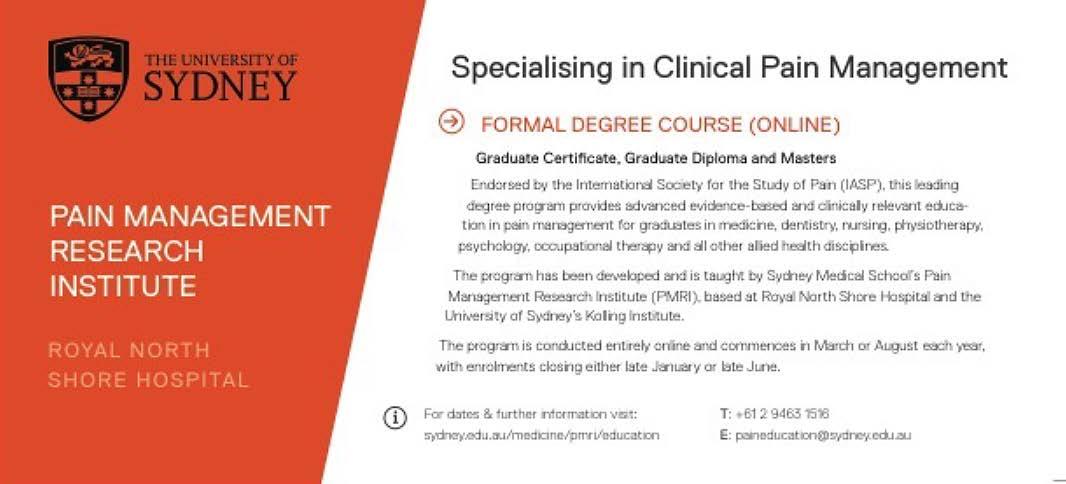
I am the worst sort of cricket fan. But through my sons I now love watching it. Not sure how much I am going to enjoy my time at the APS as my Aussie friends will inevitably mention the humiliation of the England men’s and women’s teams in recent Ashes!
Lincoln Tracy is a postdoctoral research fellow in the School of Public Health and Preventive Medicine at Monash University and freelance writer from Melbourne, Australia. He is a member of the Australian Pain Society and enthusiastic conference attendee. You can follow him on Twitter (@lincolntracy) or check out some of his other writing on his website
Cognitive Behavioural Therapy and van Gogh’s Sister-in-law
A Chat with Beverly Thorn
Beverly Thorn, PhD, ABPP, is Professor Emerita of Psychology at the University of Alabama. Thorn obtained her PhD in Bioclinical Psychology from Southern Illinois University in 1980 and worked at the Ohio State University before spending much of her career the University of Alabama. Since her retirement in 2016, Thorn has continued to play an active role in the dissemination and implementation of CBT for chronic pain in low-income and disadvantaged populations. In the lead up to the 42nd Annual Scientific Meeting of the Australian Pain Society, held in Hobart, Thorn spoke with Lincoln Tracy, a research fellow from Monash University, Australia about her path to pain research, her passion for information dissemination, and more. Below is an edited transcript of their conversation.
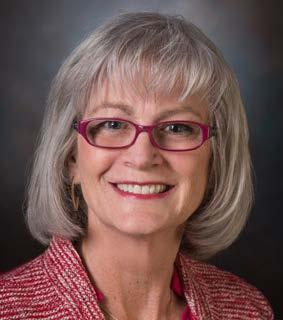
How did you get started in research?
When I was young, growing up in the suburbs of Washington, I had a neighbour who was a social worker who I looked up to. She got me a summer job where she worked, and I loved getting to work closely with people. So, I started out as an undergraduate sociology major at Emory University in Atlanta, but it was all theory. It drove me crazy!
Then I took my first psychology class as a sophomore, and I was hooked. After that I worked with a faculty member in psychology, which was a great opportunity for me. It was non-human animal research, looking at brain mechanisms of eating and drinking. I did my Honours project there, before being accepted into an early version of a health psychology program at Southern Illinois.
Once again, I gravitated towards the neuroscience end of things, probably because that was what I was used to. I had a mentor who was interested in opiate dependence and withdrawal research. It wasn’t until later, after I became a faculty member, that I started doing human research as well as animal research. I did that for 15 years and then I moved completely to human research.
How did you make the transition from working with both humans and animals to focusing on the components of cognitive behavioural therapy for chronic pain conditions?
That was a multi-year transition. I first started doing human research when I was at Ohio State University. We were using the cold pressor test and other ischemic pain techniques, and I became very interested in observing what people were telling themselves about the experience. Some of the early studies looked at time distortion. I found it interesting that if you gave somebody a goal to, for example, last three minutes in the cold pressor, they generally lasted three minutes, even if you didn’t show them how long they were lasting. But if you told somebody to last as long as they could, they lasted about half as long.
Having a goal also led to more accurate time estimations than not having a goal, which was also very interesting to me. During this research, I talked to a lot of people. The kinds of things they were thinking was amazing, like, “I am absolutely going to die, I’m going to die, I’m just going to die”—just from having their hand in ice water. I found what people told themselves interesting, as it made a huge difference in their ability to cope.
That’s how I started looking at cognitive behavioural therapy more closely. I found most of the good clinical research was more behavioural in orientation. Bill Fordyce—the father of behavioural pain psychology—used operant theory to talk about pain and coping. He talked about positive reinforcers, negative reinforcers, punishment, and using these to improve people’s function.
There was a lot out there on behavioural aspect, but I didn’t see a whole lot out there on the cognitive aspect, especially in pain. So, one of the things I was really interested in was expanding that awareness. There was a text by Dennis Turk and his colleagues on cognitive behavioural therapy for chronic pain, but the cognitive component wasn’t fleshed out in detail. It was somewhat more theoretical than clinical or
practical. I thought, I want to make this clinical and practical. So, when I published my first book in 2004, Cognitive Therapy for Chronic Pain, I focused on applying the cognitive model to chronic pain. I’m not claiming I’m the only one who did that, but I fleshed it out for practitioners who could use this model.
What was the process behind writing that first book?
It felt like I was pulling bits and pieces from a lot of different places. As I said before, it’s not like I invented this concept by any means. For example, I looked at Aaron Beck’s work on cognitive therapy in depression and applied it to chronic pain. I thought there was a missing link in pain and that Beck’s tripartite model of automatic thoughts, intermediate beliefs, and core beliefs could be applied to chronic pain. In addition, we knew from the literature that the way people judged a pain stimulus or stressor makes a difference in the first place.
We all walk around with this running stream of automatic thoughts about our experiences. They can often get quite judgemental, especially about ourselves. A lot of the time we don’t realise they’re occurring, but they influence our emotions and coping behaviour. Like what Beck did and taught in depression, I wanted to help patients become aware of these thoughts and to question their validity. And if they aren’t valid, can we change the thought to something a bit truer?
Everybody has a set of rules and expectations about themselves, how the way the world is supposed to be, and how they’re supposed to be. For example, if someone with chronic pain believes, “To be a good person, I must financially provide for my family,” then how will they cope when they are debilitated by their pain? This is when we need to hold onto our core beliefs about our worthiness. I believed this could be a perfect template for a cognitive therapy intervention for chronic pain. Ultimately, I tried to put the book together in a format that would be useful to practitioners.
What has been the most interesting research study or clinical initiative you’ve been involved in during your career?
In the decade or so after I published my first book, I was surprised to get so many emails from practitioners who had bought and read
it. People enjoyed the book and found it useful, but they wondered whether the cognitive therapy approach—which requires written records, reading, and doing homework—was appropriate for people who don’t necessarily do a lot of reading and writing?
My initial response was, of course it is. But after thinking about it for a while, I just had to find out if what they were saying was true. So, my graduate students and postdocs embarked on a 15-year journey to make sure the therapy detailed in the book was appropriate for the general population. We started by determining at what level the patient materials in the book were written. I’m ashamed to say they were written at a tenth-grade level, and current guidelines are that our written materials for patients should be at a fifth-grade level. But that was the olden days when I hadn’t paid attention to those sorts of things.
We essentially rewrote the patient materials at a fifth-grade level. To do that, we used available guidelines to adapt the materials, increase the font size, reduce the number of syllables in words, and reduce jargon. We added illustrations, and we held focus groups with patients in the right demographic to make sure the new materials would be acceptable.
We went through a multi-year adaptation phase and ran a randomised controlled trial with patients at federally funded pain clinics called community health centres, many of whom don’t have insurance. We wanted to show the materials were appropriate and acceptable to these people, and that they would show up stay in the groups. But we also wanted to see if it the treatment was effective. And while it was effective in decreasing pain and depression, we had a higher drop out rate in our cognitive behavioural therapy group than in a simpler pain education comparison group.
The dropout rate told me that the cognitivebehavioural treatment was still too complicated and that we needed to keep adapting. And we did until we had the right kind of treatment. After that, we ran another large trial and showed both cognitive behavioural therapy and pain education did a better job than medical treatment as usual in terms of reducing pain, reducing depression, and increasing function. And we didn’t have as many dropouts. That’s been the most rewarding and most interesting aspect of my career.
What were some of the challenges in adapting and refining the cognitive behavioural therapy program?
People with limited literacy skills or from other kinds of disadvantaged backgrounds have often been cut out of research for one reason or another. But they’re a big part of our society, are differentially affected by chronic pain, and have a lot of real-world barriers to accessing healthcare. One thing we really found was transportation. In many cases one family uses one car, and they juggle people’s needs and appointments so the car can be well utilized. And sometimes they don’t have a car, so just getting them there was a problem.
But I think the most interesting thing to me is how the patients judge you based on whether they feel like you are a real person. They don’t judge you on your degrees or your intellect. They judge you on whether you’re genuine. If you are genuine, if they think you are genuine, they will do anything for you. But if they think you are not genuine or you are acting all high and mighty, they’ll never show up again. This was fascinating to me because my experience with well-educated people was the opposite. They cared about my degrees and the fancy words I was using, but they weren’t really looking at my personhood. It was challenging to break the habit of using all our fancy words, and being more real, but when you do break the habit, it’s so rewarding.
What’s the best piece of advice you’ve received?
One thing I still talk to my students about is that collaboration is really, really, important, but not everyone is going to be the ideal collaborator. The most important thing about collaboration is to do what you say you’re going to do. And then do it when you say you’re going to do it. You only need to drop the ball a few times before people start talking and you find yourself being shut out of collaboration opportunities. A key part of it is something as simple as closing the loop. When I send you an email, you send an email back saying, “Got it. Will do it” or “Got it. Can’t do it for a week but I got it.” A small message is better than nothing and sitting there wondering whether they got the email or not. And some really good advice that is often not heeded is finishing a project
before the deadline. Why? Because chances are, something unavoidable will come up right around that deadline, and now you have no insurance policy. Do it early. You won’t regret it.
Finally, if you could have a dinner party with anyone from history—dead or alive—who would you want at your table and why?
This was the hardest question by far [laughs]. I thought about inviting the Dalai Lama, but he has a very early dinner because he gets up at 3.30 in the morning. So, I would have to say van Gogh’s sister-in-law, Johanna van GoghBonger. van Gogh’s brother—Theo—was an art dealer, historian, and promoter, who really tried to help him as an artist. But mainly, he had to help him a lot with getting by day to day because van Gogh had serious mental illness. His brother went to a lot of trouble to sort of keep him propped up and painting to the point where he was such a caretaker. Theo probably shortened his own life by all the caregiving he gave Vincent, as he died prematurely.
When Theo died, Jo took up the call. She was really the one responsible for putting van Gogh’s artwork into the light. She was the one who said, “This is important stuff, and we are going to promote it.” I would love to hear her thinking process behind all of that. Was it just a matter of I had no choice, I had to provide for my family? I don’t think so, because it took a whole lot more than just providing for your family to do what she did. I’d love to hear about how she mastered all that while being a woman in the late 1800s, which was a really difficult time for professional women.
Lincoln Tracy is a postdoctoral research fellow in the School of Public Health and Preventive Medicine at Monash University and freelance writer from Melbourne, Australia. He is a member of the Australian Pain Society and enthusiastic conference attendee. You can follow him on Twitter (@lincolntracy) or check out some of his other writing on his website.
President’s AGM Report
Trudy MaunsellThis is the report that was delivered to our members at the 2022 AGM in Hobart.
The past 12 months have continued to challenge all of us with the Delta and Omicron variants of the COVID pandemic dominating our professional and personal lives, interrupted only recently by devastating storms and flooding in many Australian states. I hope this message finds you and yours well and safe.
In this report I will provide an update on Board and Society activity, expand upon our strategic direction and plan for the next 12 months and acknowledge the work of the Australian Pain Relief Association (APRA) and several members.
April last year saw the retirement of longstanding Board member and Secretary Will Howard and the standing down of our WA Director Shadreck Tozana, NT Director Diann Black, and the move to the Executive positions of Secretary for Dinah Spratt and President-Elect for Joyce McSwan. Anne Burke moved to the ex-officio role of Immediate Past President and continues to participate in Society initiatives, including Pain School for Translation And Research (painSTAR) and the Scientific Program Committee. We have been pleased to welcome our new directors Jacintha Bell (WA), Rav (Hari) Harish (NT), Karalyn Huxhagen (QLD), and Bernadette Smith (TAS), who have all hit the ground running. We have also welcomed Kylie Dark as Administration and Project Officer, and she has proven to be a great addition to our administration team.
BLOG WEBCommittee. Tim stepped up from NSW Director and took over the mantle of Treasurer from Gavin Chin, not realising what a challenging time he was about to face. Being the Treasurer during a pandemic resulted in a cancelled conference in 2020, a rapid transition to a virtual offering in 2021, and finally a return to a face-to-face conference here in Hobart. This, combined with the management of our investments has no doubt resulted in a few grey hairs and hair loss that Tim could have done without! Seriously, Tim has navigated the storm of accountancy incredibly well and we sincerely thank him for his hard work and wish him an enjoyable break from financial statements, emails, learning packages, and other projects. Following the elections on this agenda, we welcome Victorian State Director Laura Prendergast into the Treasurer’s role and Dr Esther Dube to the role of Victorian State Director.
As evidenced by our financial and auditors report the Society has weathered the COVID storm very well with an excellent return on our investments. As Tim has said on several occasions, we might not have made a lot of money during the pandemic, but our expenditure was a lot less as well. Thanks in no small part also goes to Sunny Sun, Associations Operations Manager from DCC&A, and our financial advisor Kevin McGrath from Findex Wealth Management.
The arrival of four new Board members has highlighted the need for good mentorship, clear documentation of policies and procedures, and has brought fresh perspectives to our team. As all four new members have mentioned, it’s a whole new language on the Board with lots of abbreviations and acronyms to remember. I’d like to acknowledge and thank all members of the Board who volunteer their time to the Society, usually after a heavy clinical workload and whilst juggling family commitments and responsibilities. Thank you!

This year sees the end of our Treasurer Tim Austin’s tenure on the Board and Executive
The past 12 months has seen the wind up of the Australian Pain Relief Association, APRA. APRA was formed many years ago when a substantial donation was made by a benevolent family and, as the APS was not recognised as a charity at that time, a close working relationship between the APS and APRA allowed for the establishment of the flagship PhD Scholarship program. The APRA Board including Drs David Gronow, Tim Semple, Malcolm Hogg, and Brendan Moore, Professors Paul Rolan, Mark Hutchison, Phil Siddall, Michael Farrell, and Maree Smith, and Ms Amal Helou have diligently managed these funds over the years and many PhD recipients have benefitted from their management of the account. The funds have been transferred to the APS and placed in a dedicated gift fund and will not, indeed, cannot,
according to the Objects of our Society, be used for operating expense of the Society.
The APS Board met via Zoom over the weekend of October 23 – 24, 2021 to map the strategic direction for the Society for the next two years and beyond and to carry on with the projects from our previous strategic plan. Our priority areas remain membership, research, education and innovation, services and resources, good governance and operations, and advocacy. We also engaged Megan Walker of Market Savvy Health and Medical Marketing Strategies, Coaching and Training to advise on ways in which we can improve our profile, promote membership, and expand our reach. These strategies have also been built into our strategic plan.
We have allocated one major project to each of these priority areas for the next two years, which include:
> The establishment of a mentorship program for APS members
> Offering a new clinical research grant to the value of $30,000 and an additional PhD scholarship
> Re-vamping our Scholarships, Grants, and Fundraising Committee to evaluate applications for clinical research grants, PhD scholarships, and to explore ways in which the Society can raise additional income via philanthropic donations
> Purchasing a learning management system on which we will develop and offer online learning modules and packages
> Reviewing, updating, and documenting all internal policies, procedures, and bylaws to ensure we continue to demonstrate transparent operation and governance
> Developing a position statement on pain in aged care
> Developing a list of patient-reported experience and outcome measures available for use in pain management services and centres
> Advocating for improved pain management care, access to services and resources, research, and funding. We will continue to advocate for improvements in the aged care sector and will commence a project examining pain in the disability sector
Several written submissions have been provided since our last AGM and are available for your
perusal on the APS website. Input into these submissions has been provided by several Board members, representatives on the Relationships Committee, and APS members, and their support has been invaluable. The recent submissions listed include:
> Australian Commission on Safety and Quality in Health Care (ACSQHC) draft Low Back Pain Clinical Care Standard Consultation
> Feedback to Remote Primary Care Manuals with thanks to Roger Goucke
> ACSQHC National Opioid Stewardship Program Consultation
> ACCC Managed Care draft determination regarding Honeysuckle Health and nib AA1000542-1
> Department of Health (DoH) draft Terms of Reference for the Post-Market Review of Opiate Dependence Treatment Program Medicines
> DoH Survey of Aged Care Quality Standards
> ACSQHC Guiding Principles for Pain Medication Management in Residential Aged Care Facilities with thanks to Karla Wright
> DoH Post-Market Review of Opiate Treatment Program Medicines
> ANZAOP Improving Orofacial Pain Management in Australia and New Zealand with thanks to Dr Helen Boocock
> ACSQHC Opioid Analgesic Stewardship in Acute Pain Clinical Care Standard
> Royal Commission into Defence and Veteran Suicide
> MSAC Application 1678 – Integrating practice pharmacists into Aboriginal Community Controlled Health Services (The IPAC Project). The Scientific Program Committee, ably lead by Professor Kevin Keay, has managed to traverse the perilous waters of a cancelled annual scientific meeting, a rapid conversion to a virtual offering, and then the uncertainty of whether we could return to a face-to-face meeting in Hobart. Our sincere thanks go to the SPC and particular thanks to Alex Robertson, Conference Manager for DCC&A for her enthusiasm, hard work and commitment. I encourage you all to come to Canberra in 2023 and to submit abstracts, participate in topical sessions as speakers or facilitators and present a poster.
We are committed to bringing you painSTAR in November this year. As we know, this education initiative, supported by the APS, IASP, Faculty of Pain Medicine, APRA, and the Australian Rheumatology Association, was deferred due to the pandemic. Applications are now open for new applicants, with previously accepted applicants automatically accepted for this year’s school. We have a great program prepared which will stretch the minds and skills of early and midcareer researchers with a faculty of nationally and internationally renowned speakers.
Congratulations to our recently recognised Distinguished Members: A/Prof David Champion AM (2020), Dr Will Howard (2021), and Dr Michael Farrell (2022), who all have certainly provided valuable service to the Society over many years in a variety of roles including
consistent contributions to our ASMs and support of SIGs, as a newsletter editor, Board member, Secretary, scientific program committee member, PhD chair, clinicians, and researchers. The pain world and the Society are richer for your involvement.
Finally, my sincere and heartfelt thanks go to Tracy Hallen, Executive Officer for the APS who works tirelessly to make the operation of the Society smooth, streamlined, and efficient. Tracy has been integral to the operation of the Society for the past 12 years and her drive and enthusiasm has seen many projects come to fruition – we would not be where we are today without her. Thank you, Tracy. As mentioned earlier, we are also pleased to welcome Kylie Dark to ably assist with our future growth.
Trudy MaunsellAnnouncing the APS #6 PhD Scholarship (For
funding in 2023)
The Australian Pain Society (APS) is a multidisciplinary organisation whose purpose is to advance pain management through education, research, and advocacy for transformational improvements in clinical care.
The APS is pleased to announce a new scholarship to our flagship PhD Scholarship program that has supported research into pain for over 25 years.

In brief, the award is to enable full time research leading to a Doctor of Philosophy or equivalent:
> Three years full time study from 2023 to 2025
> At any recognised Australian University
> The applicant must be an Australian citizen or permanent resident
> The applicant and their supervisor must be members of the Australian Pain Society; and
> The funded project can be related to any aspect of the mechanisms, diagnosis, or treatment of acute or chronic pain. Further information about the PhD Scholarship, including the Conditions of Award, can be obtained from the APS Secretariat.
PhD Scholarship Application forms are available online and must be submitted by 5pm AEST on Wednesday 27 July 2022.
APS Executive Update
Farewell to our retiring Treasurer
We wish to sincerely thank Tim Austin as he steps down from his role as Australian Pain Society (APS) Treasurer.
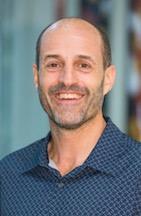
Tim has been a long-term member of the APS Board. He began his time on the Board in 2015 as the NSW Director before becoming Treasurer in 2018.
Tim was also an inaugural member of the APS Relationships Committee for four years from 2011-2014.
During his time as Treasurer, Tim was instrumental in the APS being awarded charity status and overseeing the new constitution, effective from 10APR19. Since the adoption of the new APS constitution, Tim has also been a keen contributor to the supporting By-Laws and their recent biennial revision.
Tim was also a key player in the establishment of the Pain Special Interest Group of the Australian Physiotherapy Association and is currently Chair of the National Committee of this Network. In 2021, Tim was the first physiotherapist in Australia to become a Specialist Pain Physiotherapist and be awarded Fellowship of the College of Physiotherapy.
Needless to say, Tim’s tenure as APS Treasurer continued through the very challenging times of COVID and consequent lockdowns in 2020 and 2021. The APS is forever grateful for his steady guidance through this period and his willingness to continue in the role until we were able to return to face-to-face conferences once again.
We wish Tim well in his future endeavours!
Spotlight on our new Treasurer
Congratulations to Dr Laura Prendergast, who has been appointed as the new APS Treasurer.

Laura served as the Victorian Director since 2017. In that time, Laura has also been an avid contributor to the membership committee. Laura is always willing to help with board projects and commitments. She has been particularly key in the development and revision of the APS By-Laws and the strengthening of our governance processes in general.
BLOG WEB
Laura is a Senior Health Psychologist at the Northern Health Pain Service in Melbourne, Victoria, where she delivers group programs and provides assessment and individual treatment to clients with persistent pain. She also consults on the Transport Accident Commission (TAC) Clinical Panel, reviewing and providing advice for psychologists treating people who have been touched by road trauma. Laura is passionate about multidisciplinary pain management and enjoys the challenge of improving educational resources for people with pain in her clinical practice. She’s a strong advocate for health psychology and its focus on prevention and population level interventions in addition to targeted clinical work.
The APS Board is delighted that the Society will continue to benefit from Laura’s wise counsel as she steps into this important Executive role.
Spotlight on our new VIC Director
We are delighted to confirm that Dr Esther Dube has joined the APS Board as the new Director for Victoria.
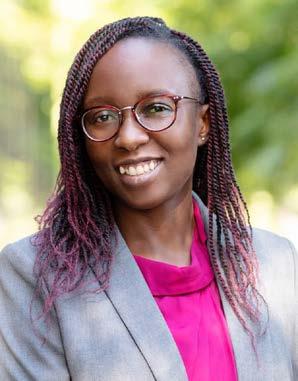
Dr Esther Dube is a General Physician and Pain Medicine Specialist working in Melbourne. She did her undergraduate training in Zimbabwe and then undertook her specialist training in the Northern Territory and Victoria. Her pain interests lie in acute pain, perioperative pain management to improve patient outcomes, chronic pain (particularly in the elderly and medically complex patients), as well as cancer pain. She is passionate about educating other health care professionals about pain.
Esther is keen to contribute to the APS, and we welcome her to the APS Board!
Meet a Member
Jacintha Bell, BSc (Occupational Therapy)Jacintha Bell is currently the Director of Lifeworks Occupational Therapy, a private practice providing mental health and pain management occupational therapy services. She is the WA Director for the APS since 2021 and has been an APS member since 2015, when she started working in pain management.
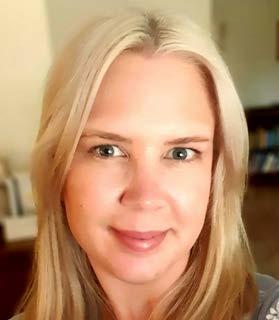
How did you get into pain research/clinician practice?
I always had an interest in pain management as my Mum experienced fibromyalgia and chronic migraines. I had just moved from a community mental health role into private practice, and I came across an expression of interest for an occupational therapy position in a multidisciplinary pain service. I put in an application and was successful. The role opened my eyes to the worId of pain management. The more I learnt, the more fascinated I was.
What does your current research or clinical practice focus on? Why is this important?
My current practice focuses on helping people with persistent pain and mental health conditions to be able to participate in things that are important to them. This is important because through meaningful participation, people can find purpose, connection, and a sense of belonging, and ultimately a better quality of life.
What do you think will be the next “hot topic” in your area of research or practice?
The next “hot topics” in pain care occupational therapy are the use of virtual realities in pain care, and the role of occupational therapy in the management of long Covid.
If you could offer one piece of advice to a younger you, what would it be and why?
Spend more time reflecting on what you are doing, why you are doing it, and how could you do better. Thanks to Michelle Bihary, I realised more recently that we don’t learn by doing, we learn by reflecting on what we are doing, and that has really resonated with me. I think I could have made some better decisions (or at least avoided a few mistakes) over my lifetime with more opportunities for reflection.
How and why did you join the APS Board?
I joined the Board in 2021 following a discussion with Trudy (the current President), after the previous WA Director had completed his term. I feel passionate about the role occupational therapy has in pain management and was keen to ensure there was an Occupational Therapy and Western Australian perspective contributing to the APS Board.
If you weren’t in the pain science field, what would you be doing?
I would be engaging in my other passions –middle eastern music and dance and growing my own fruit and veggies!
Assessing a child or adolescent with low back pain is different to assessing an adult with low back pain
Thank you to APS members Joshua Pate and David Anderson and their colleagues Rhiannon Joslin and Karen Hurtubise for sharing the following recent publication.
Article first published online: 26 February 2022
Journal Reference: Pate, J. W., Joslin, R., Hurtubise, K., & Anderson, D. B. Assessing a child or adolescent with low back pain is different to assessing an adult with low back pain. Journal of Paediatrics and Child Health.
DOI: https://doi.org/10.1111/jpc.15933
Link: https://pubmed.ncbi.nlm.nih.gov/35218582/
Abstract
In contrast to an assessment of an adult presenting with low back pain (LBP), clinicians should utilise different approaches when assessing children and adolescents presenting with LBP. Children are not ‘little adults’. There are some unique pathologies that only occur in this age group: (i) serious pathologies include infection, fracture, child abuse and malignancy; (ii) growth-related pathologies include scoliosis, Scheuermann’s disease, pars fracture and spondylolysis; and (iii) rheumatological conditions include juvenile idiopathic arthritis and ankylosing
BLOG WEB
spondylitis. With changes in each child occurring physically, emotionally and socially, a clinician’s knowledge of typical developmental milestones is essential to identify regression or delayed development. When listening to a child discuss their pain experience, a flexible structure should be implemented that gives the capacity to actively listen to a child’s narrative (and that of their guardian) and to conduct an effective physical examination. This viewpoint also summarises the relationship between potential clinical diagnoses and key elements of a physical examination. Deciding on the type and timing of paediatric-specific physical examination tests requires unique child-centred considerations. Paediatricspecific outcome measures should be used but implemented pragmatically, with consideration regarding the time, complexity and pathology suspected. Systematic and rigorous approaches to both treatment planning and re-assessment are then proposed for the assessment of children and adolescents presenting with LBP.
Declaration
The authors have nothing to declare.
Have you had an article accepted for publication recently?
The Australian Pain Society (APS) is keen to share publications from our members with their colleagues via our eNewsletter. If you’ve had an article accepted or published recently, please contact our Assistant Editor Joanne Harmon via the APS Secretariat (aps@apsoc.org.au) with the title, authors, and reference (i.e., journal, volume, and DOI) of your article and request the submission template. We would love it if you also supply a short commentary (300 words max) to give our readers the gist of the article.
Continued opioid use following an emergency department presentation for low back pain
Thank you to APS member Dr Stephanie Mathieson and her colleagues Danielle Coombs, Christopher Maher, Melinda Collett, Christina Abdel Shaheed, Chung-Wei Christine Lin, and Gustavo Machado for sharing the following recent publication.
Article first published online: 20 April 2022
Journal Reference: Coombs DM, Maher CG, Collett M, Mathieson S, Abdel Shaheed C, Lin CC, Machado GC. Continued opioid use following an emergency department presentation for low back pain. Emerg Med Australas. 2022 Apr 20. Epub ahead of print. PMID: 35441464.
DOI: https://doi.org/10.1111/1742-6723.13979
Link: https://onlinelibrary.wiley.com/doi/ abs/10.1111/1742-6723.13979
Abstract
Objective
BLOG WEB
To investigate the proportion of patients with low back pain who receive an opioid analgesic prescription on hospital discharge, the proportion using opioid analgesics 4 weeks after discharge, and to identify predictors of continued opioid analgesic use at 4 weeks after an emergency department (ED) presentation in opioid-naïve patients.
Design
An observational cohort study nested within a randomised controlled trial.
Setting
Four EDs in New South Wales, Australia.
Subjects
Adults who presented to the ED with non-specific low back pain or low back pain with lower limb neurological signs and symptoms.
Methods
The parent randomised trial investigated the effectiveness of a multifaceted intervention to implement guideline recommendations for low back pain in the emergency department. This observational study analysed patient reported outcomes of opioid use following ED discharge, including with the question: ‘Have you taken an
opioid medication (e.g. oxycodone, codeine) for your pain in the last 7 days?’. Other data were extracted from participating hospitals’ electronic medical records of age (years); sex (male, female or other); mode of arrival to the ED (ambulance or other); triage category using the Australasian Triage Scale (life threatening, emergency, urgent, semi-urgent or non-urgent); if an opioid analgesic administered during the ED or hospital stay (yes/ no); if an opioid analgesic prescription given at discharge (yes/no); if an opioid analgesic used immediately prior to the ED presentation (yes/ no); preferred spoken language (English/other); Socio-Economic Indexes for Areas (SEIFA) (deciles 1–10); ED length of stay (hours); mode of separation from the ED (admitted to hospital or discharged to community); and inpatient length of stay (days). A multivariable logistic regression analysis determined the relationship between the selected variables and continued opioid use at 4 weeks post-ED presentation. Only patients who were opioid-naïve were included in this analysis.
Results: Of the 104 patients included, 33 (31.7%, 95% confidence interval [CI] 22.9–41.6) received an opioid analgesic prescription at hospital discharge and 38 (36.5%, 95% CI 27.3–46.6) reported taking an opioid analgesic for pain 4 weeks after the ED presentation. Among opioid-naïve patients (n = 85), older age (odds ratio [OR] 1.04, 95% CI 1.00–1.08, P = 0.031) was the only predictor for continued opioid analgesic use at 4 weeks post-ED presentation.
Conclusion
About one-third of patients who present to the ED with low back pain receive an opioid analgesic prescription on discharge and are taking an opioid analgesic 4 weeks later. These findings justify future research to identify strategies to reduce the risk of long-term opioid use in patients who present to the ED with low back pain.
Declaration
Christopher Maher has received research grants from various government and not-for-profit agencies. His expenses have been covered by professional associations hosting conferences he has spoken at. He was on the Steering Committee of the Lancet Low Back Pain Series. FlexEze™ provided heat wraps at no cost for the SHaPED trial that Danielle Coombs, Gustavo Machado and Christopher Maher were investigators on. The other authors have nothing to declare.
Pain is not a “thing”: how that error affects language and logic in Pain Medicine
Thank you to APS members Milton Cohen and John Quintner and their colleague Asaf Weisman for sharing the following recent publication.
Article first published online: 11 April 2022
Journal Reference: Journal of Pain
DOI: https://doi.org/10.1016/j.jpain.2022.03.235
Link: https://www.jpain.org/article/S15265900(22)00284-X/fulltext
Abstract
Effectiveness in academic and clinical communication depends upon agreement on what words and concepts denote and on the consequent ability to argue logically and accurately. In the pain medicine literature there are many examples of imprecision and confusion in this respect, including misnomers
and fallacies in reasoning. This article firstly critically examines some of these misnomers. Identified themes include pain being conceptualised as a “thing,” conflation between nociception and pain, and confusion between stimulus and response and between the perspectives of the experiencer and the observer of “pain”. Secondly, fallacies in reasoning are identified that contribute to imprecision and confusion. These include reification of pain, attributing to the brain functions that belong to whole organisms, and the illusory truth effect. Thirdly, these themes are identified also in constructs that are shown to be based more on speculation than on fact. Taken together, these observations reveal a need to review and, where necessary, modify terminology and concepts used in Pain Medicine.
Declaration
The authors have nothing to declare.
Women In Health Eligible For Leadership Development Scholarships

Women in health can now apply for a leadership development scholarship from Women & Leadership Australia. Providing world-class leadership development programs for women at all stages of their careers, Women & Leadership Australia brings together the latest in leadership theory and practice with a focus on applied learning, building networks and a flexible, parttime delivery to fit in with your schedule. Scholarships are now available to encourage more women to enhance their impact at work and beyond, and to support the development of women leaders at all levels. Partial scholarships of $1,000-$5,000 will support participation in one of four courses designed for women in non-leadership roles through to senior leaders. Apply by Friday 10 June or find out more at https://www.wla.edu.au/health.html.
PhD Opportunity - University of South Australia
Fantastic opportunity for a fully funded PhD on closing an evidence practice gap for pain care provision for those people living with Parkinson’s disease. Advance your pain career today and take the next step - check out this golden opportunity at the University of South Australia. For more details, click here.
Applications close on Friday, 10 June 2022

NEW eBook!

Pain in Residential Aged Care Facilities: Management Strategies
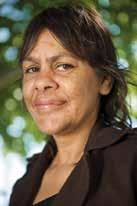
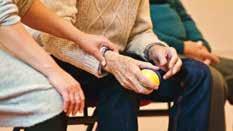
2nd Edition
The gold standard in Pain Management for Older People is now available in eBook format!
In this edition:
Chapter 1: About Pain
Chapter 2: Identi cation and assessment of pain in aged care residents
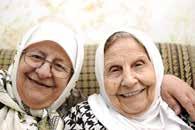
Chapter 3: Beyond medication: psychological and educational approaches to pain management
Chapter 4: Movement and physical activity
Chapter 5: Complementary approaches to pain
Chapter 6: Pharmacological treatments
Chapter 7: Dementia and cognitive impairment: special considerations
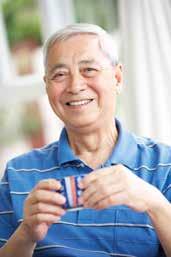
Chapter 8: Pain at the end of life
Chapter 9: Pain and nutrition
Chapter 10: Quality and systems issues


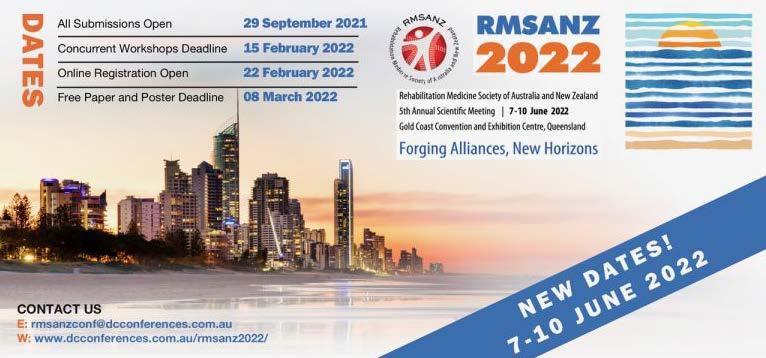
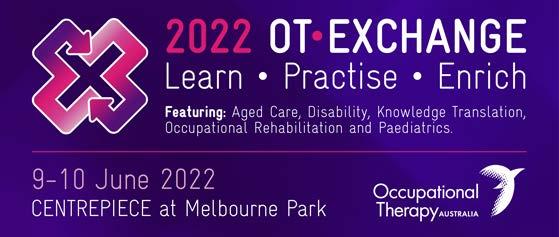

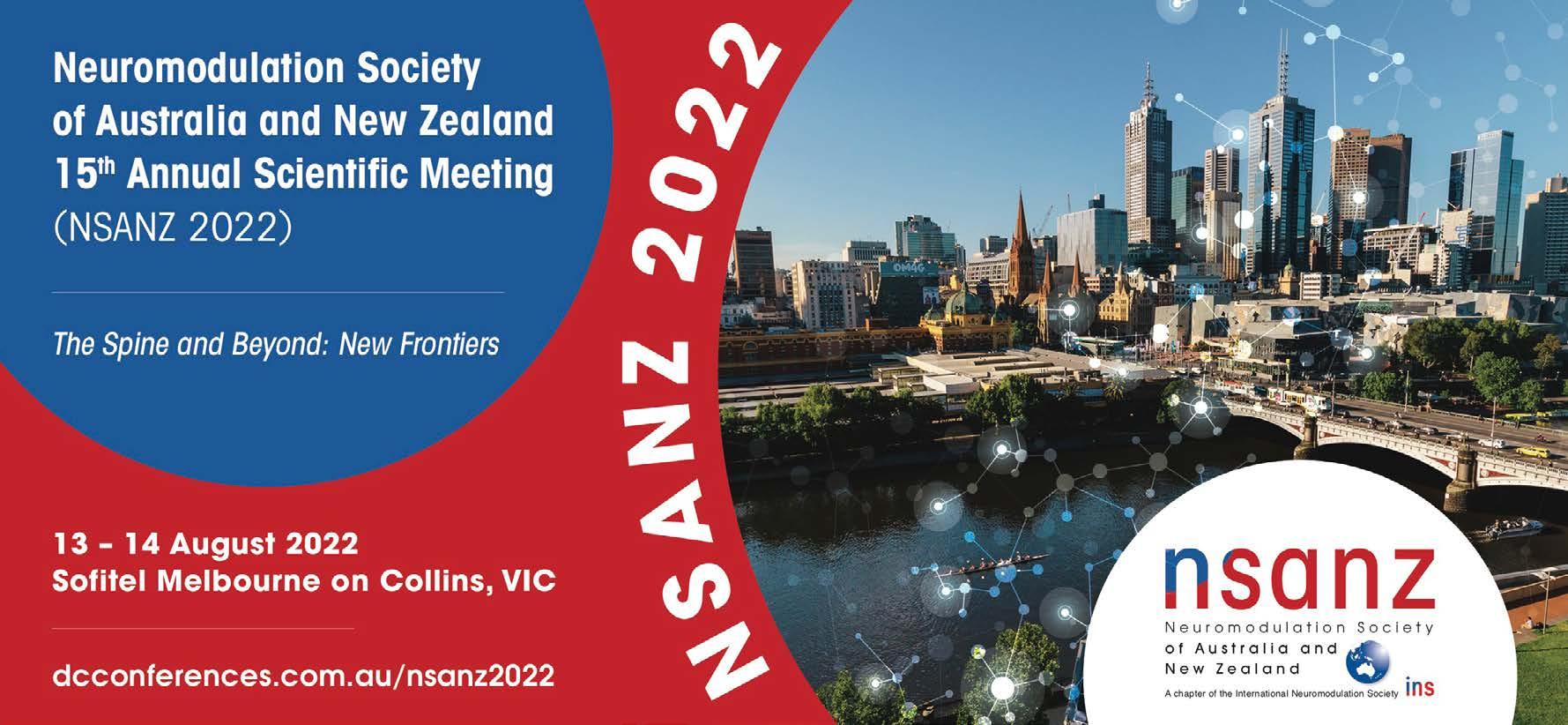





NEW!
> ACSQHC Opioid Analgesic Stewardship in Acute Pain Clinical Care Standard, launched 27APR22: https://www.safetyandquality.gov. au/standards/clinical-care-standards/opioidanalgesic-stewardship-acute-pain-clinicalcare-standard
Other items of interest for our members:
> Latest opioid data from the Australian Bureau of Statistics: Opioid induced deaths in Australia. https://www.abs.gov.au/ articles/opioid-induced-deaths-australia
> Australia’s annual overdose report 2019 from the Pennington institute : http:// www.penington.org.au/australias-annualoverdose-report-2019/
BLOG WEB
> The Third Australian Atlas of Healthcare Variation: This series explores how healthcare use in Australia varies depending on where people live. It investigates reasons for variation that may be unwarranted, and provides specific achievable actions to reduce unwarranted variation. https://www.safetyandquality.gov.au/atlas
> Painaustralia eNewsletter latest issue, available online at http://www.painaustralia. org.au/media/enews
> ePPOC: electronic Persistent Pain Outcomes Collaboration: The electronic Persistent Pain Outcomes Collaboration (ePPOC) is an Australasian initiative that aims to improve the quality of care and outcomes for people who experience chronic pain. For more information about ePPOC, refer to the website: http://ahsri.uow.edu.au/eppoc/ index.html
> PainHEALTH website: painHEALTH‘s aim is to help health consumers with musculoskeletal pain access reliable, evidence-based information and tips to assist in the co-management of musculoskeletal pain. painHEALTH is an initiative of the Department of Health, Western Australia. http://painhealth.csse.uwa.edu.au/
> Stanford University: CHOIR Collaborative Health Outcomes Information Registry https://choir.stanford.edu/
> Opioid Podcasts for GPs: These podcasts are produced by David Outridge GP, and FAChAM Trainee as a project under the auspices of Dr Steven Kelly Staff Specialist in Addiction Medicine, Kullaroo Clinic Gosford. A 20 week series from the Hunter Postgraduate Medical Institute (University of Newcastle) : http://www.gptraining.com.au/ recent-podcasts
> Airing Pain: Pain resources via an online radio show produced by Pain Concern, a UK registered Charity: http://painconcern.org.uk/ airing-pain/
> Digital Health Guide: Developed by Primary Health Network Tasmania, check out the pain resources by accessing the link https:// digitalhealthguide.com.au/Account/LogOn? ReturnUrl=%2fSpecialtyFormulary%2f2 At login, Username: connectingcare, Password: health
> Indigenous Resources: New webpage on the APS website aggregating Indigenous resources: https://www.apsoc.org.au/ Indigenous-Resources
NPS MedicineWise resources:
> Choosing Wisely Australia – News & media: https://www.choosingwisely.org.au/ news-events/media-releases/choosingwisely-resource-addresses-patient-opioidknowledge-gap
> Over the counter codeine – changes to supply: https://www.nps.org.au/medicalinfo/clinical-topics/over-the-countercodeine-changes-to-supply
> Medicines with codeine – what you need to know: https://www.nps.org.au/medical-info/ consumer-info/medicines-with-codeinewhat-you-need-to-know
> Information about opioids and chronic noncancer pain: U-tube clip (5.39mins) https:// www.youtube.com/watch?v=8R4RT0pUCf
4&feature=share&fbclid=IwAR2dbhzgEAcc
7B-ogq2a6Xhud5FDkbciPbdJ9pb94GnQI6p AeifGd1VP-_I
> Opioids: Communications videos: https:// www.nps.org.au/opioids-communication-videos
TGA
> Codeine information hub: https://www.tga. gov.au/codeine-info-hub
NSW Agency for Clinical Innovation resources:
> Brainman and Pain Tool Kit translations, SEP15: http://www.aci.health.nsw.gov.au/ chronic-pain/translated-resources
> Pain Management Resources: http://www. aci.health.nsw.gov.au/resources/painmanagement
> Quicksteps to Manage Chronic Pain in Primary Care: http://www.aci.health.nsw. gov.au/chronic-pain/health-professionals/ quick-steps-to-manage-chronic-pain-inprimary-care
> Built into Quicksteps: “How to de-prescribe and wean opioids in general practice”: http:// www.aci.health.nsw.gov.au/chronic-pain/healthprofessionals/quick-steps-to-manage-chronicpain-in-primary-care/how_to_de-prescribe_and_ wean_opioids_in_general_practice
> A list of helpful apps for consumers and clinicians now available at: http://www.aci. health.nsw.gov.au/chronic-pain/healthprofessionals/management-of-chronic-pain
> Chronic Pain in the ED: https://www.aci. health.nsw.gov.au/networks/eci/clinical/ clinical-resources/clinical-tools/painmanagement/chronic-pain-in-the-ed
New Members
New Members as at 24 May 2022:
Dr Renu Aggarwal Pain Medicine Physician
Mr Frederico Estermann Physiotherapy
Miss Naomi MacPherson Science Research
Prof Albert Reece Addiction Medicine
Ms Marina Cousins Nursing
Ms Ava Curtin Science Research
Dr Dev Rudolph Psychiatry
Calendar of Events
7-10 June 2022
Rehabilitation Medicine Society of Australia and New Zealand (RMSANZ) 5th Annual Scientific Meeting
Forging Alliances, New Horizons
Gold Coast Convention and Exhibition Centre, QLD
https://www.dcconferences.com.au/rmsanz2022/
9-10 June 2022
OT Exchange 2022
Learn • Practise • Enrich Centrepiece, Melbourne Park Olympic Boulevarde, Melbourne, VIC
https://www.otausevents.com.au/otexchange2022/
29-31 July 2022
PSA
22 PSA National Conference 2022
Hyatt Regency Darling Harbour, Sydney, NSW https://www.psa22.com.au/
2-4 August 2022
BLOG WEB
National Rural Health Alliance 16th National Rural Health Conference
Bridging social distance; Rural health innovating & collaborating
Brisbane Convention & Exhbition Centre, Brisbane, QLD
https://www.ruralhealth.org.au/16nrhc/
13-14 August 2022
2022 Neuromodulation Society of Australia and New Zealand (NSANZ 2022)
15th Annual Scientific Meeting - The Spine and Beyond: New Frontiers
Sofitel Melbourne on Collins, Melbourne, VIC
https://www.dcconferences.com.au/nsanz2022
14-16 August 2022
Dietitians Australia 2022
Be Bold
Adelaide Convention Centre, Adelaide, SA
https://da2022.com.au/
14-17 September 2022
Wounds Australia 2022 Conference
Time to Heal, Time to Unite, Time to Innovate ICC, Sydney, NSW
http://wounds2022.com.au/home
6 October 2022
RECOVER Conference 2022
Optimising patient care: from interpersonal to digital connections
Sofitel Brisbane Central, Brisbane, QLD
https://recover.centre.uq.edu.au/
21-24 October 2022
NZSA & ASA Combined Scientific Congress 2022
Jointly hosted by the New Zealand Society of Anaesthetists (NZSA) and the Australian Society of Anaesthetists (ASA)
TSB Arena, Wellington, NZ
https://www.csc2022.co.nz/
13-17 November 2022
Australian Pain Society
painSTAR - Pain School for Translation And Research
Novotel Barossa Valley, Adelaide Hills, SA
https://dcconferences.eventsair.com/painstar
15-16 November 2022
National Rural & Remote Allied Health SARRAH Conference 2022
People, Purpose, Passion: Pathways to Success
Virtual, Online Conference
https://sarrahconference.com.au/
25-27 November 2022
RACGP
GP22
Melbourne Convention & Exhibition Centre, Melbourne, VIC
https://www.racgp.org.au/gp22/gp22-home
2-5 April 2023
Australian Pain Society 43rd Annual Scientific Meeting
APS 2023
National Convention Centre National Convention Centre, Canberra, ACT
https://www.dcconferences.com.au/aps2023/
Vision, Purpose & Priorities
Vision:
All people will have optimal pain management throughout life.
Purpose:
The Australian Pain Society is a multidisciplinary association whose purpose is to advance pain management through education, research, and advocacy for transformational improvements in clinical care.
Priorities:
In order to achieve our purpose, the Australian Pain Society will provide:
> Membership
> Research
> Education
> Services and resources
> Good governance and operations
> Advocacy
Directors
Directors
President:
Ms Trudy Maunsell
Acute Pain Service
Princess Alexandra Hospital
Woolloongabba QLD 4102
Tel: 07 3176 5547 Fax: 07 3176 5102
President-Elect:
Mrs Joyce McSwan
Gold Coast Primary Health Network
Persistent Pain Program, QLD and PainWISE


Tel: 0412 327 795 Fax: 07 3539 9801
Secretary:
Mrs Dinah Spratt
Physiotas Physiotherapy
Shearwater TAS 7307
BLOG WEB
Tel: 03 6428 7500 Fax: 03 6424 7811
Treasurer
Dr Laura Prendergast



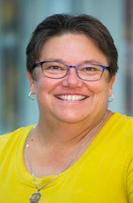
Pain Service, Northern Health
Broadmeadows VIC 3047
Tel: TBA Fax: N/A
ACT Director:
Dr Andrew Watson

Calvary Hospital
Canberra ACT 2617
Tel: 02 6201 6352 Fax: N/A
NSW Director:
Dr Tim Ho

Inner West Pain Centre
RPA Medical Centre
Newtown NSW 2042
Tel: 02 9517 1764 Fax: 02 9517 1832
NT Director:
Dr Rav Harish
Alice Springs Hospital
Central Australian Health Service
Alice Springs NT 0871
Email: rav.harish@nt.gov.au

QLD Director:
Mrs Karalyn Huxhagen
KH Pharmacy Consulting
Mackay QLD 4740
Tel: 0418 185 972 Fax: 07 4805 6155
SA Director:
Dr Michelle Harris

Royal Adelaide Hospital and Lyell McEwin Hospital
Adelaide SA
Email: michelle.harris2@sa.gov.au
TAS Director:
Ms Bernadette Smith
Psychology Plus
South Burnie TAS
Tel: 03 6431 9959 Fax: 03 6431 9950
VIC Director:
Dr Esther Dube
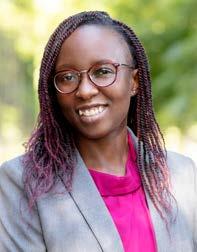
Austin Health Heidelberg VIC 3084
Tel: New VIC members please contact
Dinah Spratt – Secretary Fax: N/A

WA Director:
Ms Jacintha Bell
Lifeworks Occupational Therapy
Subiaco WA 6008
Tel: 0451 178 880 Fax: 08 6323 3329
Office Bearers
Immediate Past President:
A/Prof Anne Burke
Central Adelaide Local Health Network
Royal Adelaide Hospital
Adelaide SA 5000
Tel: 08 7074 2835 Fax: 08 7074 6247
SPC Chair:
A/Prof Kevin Keay



Department of Anatomy
University of Sydney
Sydney NSW 2006
Tel: 02 9351 4132 Fax: 02 9351 2817
IASP Liaison:
Professor Michele Sterling

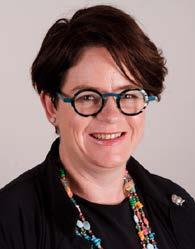

Recovery Injury Research Centre
University of Queensland
Herston QLD 4092
Tel: 07 3346 4793
Communications Coordinator:
Ms Trudy Maunsell
Acute Pain Service
Princess Alexandra Hospital
Woolloongabba QLD 4102
Tel: 07 3176 5547 Fax: 07 3176 5102
Newsletter Editor:
Dr Lincoln Tracy
School of Public Health and Preventive Medicine
Monash University
Melbourne VIC 3004
Tel: 03 9903 0288
Newsletter Assistant Editor:
Dr Joanne Harmon
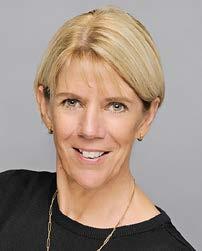
School of Clinical and Health Sciences
University of South Australia
Adelaide SA 5000
Tel: 08 8302 1442
PhD Scholarship Chair:
Dr Michael Farrell
Retired
VIC
Secretariat:
DC Conference & Association
Management Pty Ltd
PO Box 637
North Sydney, NSW 2059
Tel: 02 9016 4343
Email: aps@apsoc.org.au
Website: apsoc.org.au
